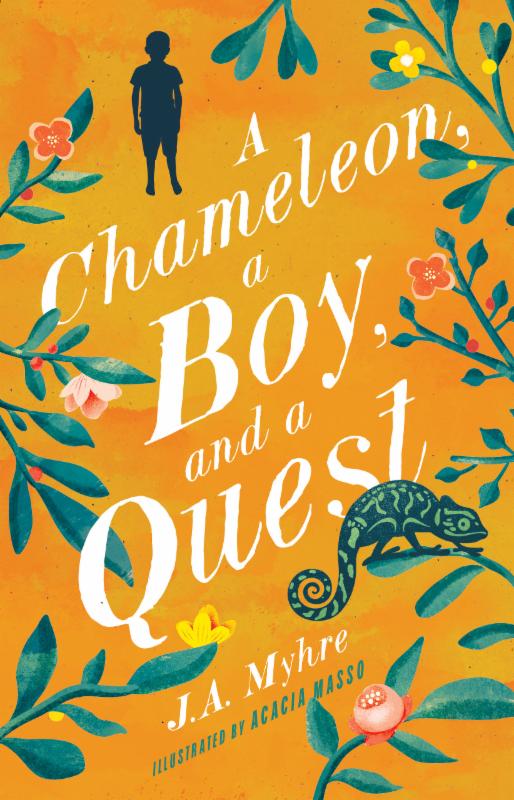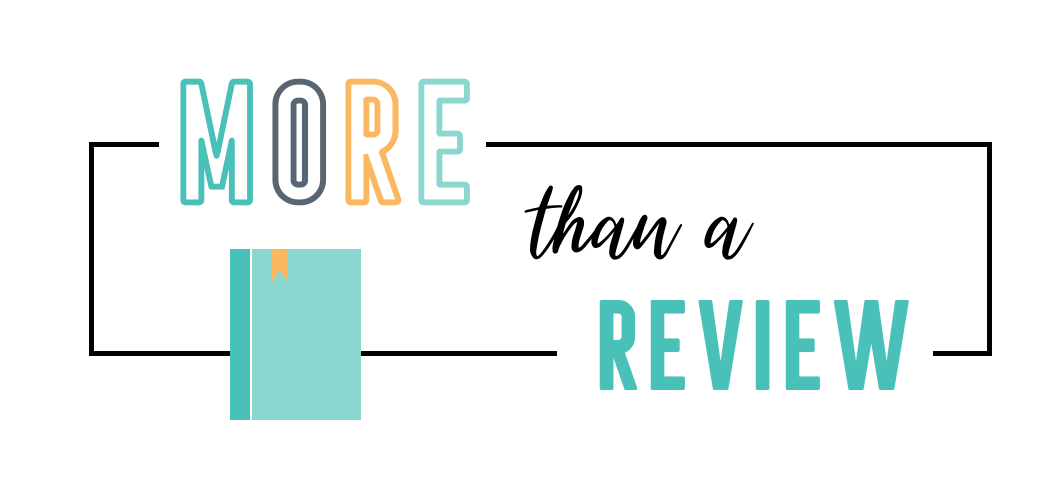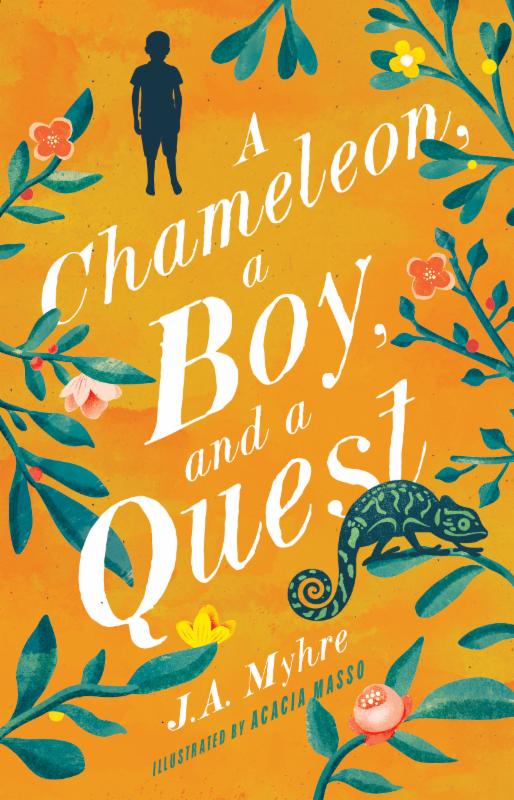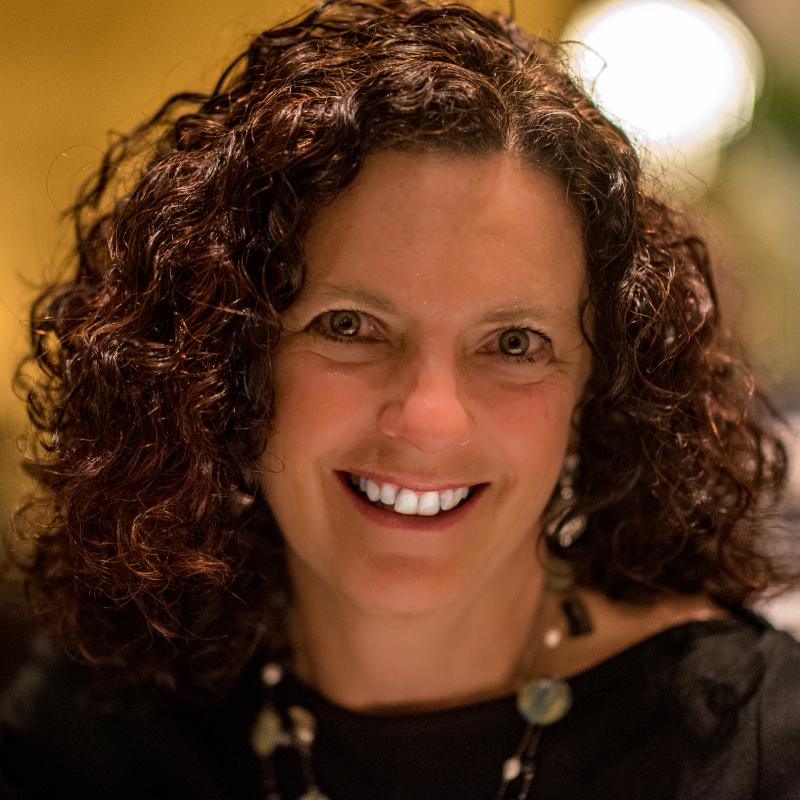I thought this was a very good book to share. During the Holidays we can get all wrapped up in the gifts and activities. A Chameleon, a Boy, and a Quest helps us to put it all in perspective. Hope you enjoy. Donna
An interview with J.A. Myhre, Author of A Chameleon, a Boy, and a Quest
Nearly 80 percent of the world’s population lives on less than $10 a day. For globally-aware parents who want to give their children a glimpse of majority-world reality, long-term medical missionary to Africa J.A. Myhre has penned A Chameleon, a Boy, and a Quest (New Growth Press/October 6, 2015/ISBN: 9781942572084/$15.99).
This beautifully-written adventure book for young readers brings to life the African savannah Myhre calls home, inviting readers to explore the country through the eyes of a 10-year-old boy named Mu. Orphaned as a toddler, Mu has served his whole life in his great uncle’s house where he is unloved and ignored. In his drudgery-filled life, Mu has little hope of happiness and doesn’t believe anything will ever change. Then one morning something special happens.
Q: You have served as a medical missionary for more than 20 years. How did you make the leap to children’s author?
I have always been a writer at heart – letters, journals, blogs. At the time I wrote this book, we were living in a very remote area on the Uganda-Congo border, and I wanted to come up with a Christmas gift for my four kids. They were all avid readers, but I noticed none of their books had any relationship to their world. So I decided to write them a story for Christmas with characters and a setting they could recognize. That became a tradition, so for four years running I wrote them a short novel each year. We would begin reading it aloud on Christmas Eve and continue each night through New Years.
 Q: Can you share more about the inspiration behind A Chameleon, a Boy, and a Quest? How old were your children when you first wrote this story for them?
Q: Can you share more about the inspiration behind A Chameleon, a Boy, and a Quest? How old were your children when you first wrote this story for them?
They were ages 7 to 12 for the first book. I wanted a story in which African characters were the heroes. The setting is basically the same as our village and the surrounding savannah and mountains. My kids often kept chameleons as pets and would walk around with them on their shoulders, and I thought the little reptiles looked wise. Africa does not have such stark divisions between the material and spiritual worlds, between what is seen and what is real, so imbuing animals with communication and painting the background of spiritual forces made sense. We also had a yellow lab that once saved my daughter from a cobra on the path and was a true protector and friend. I often thought a good dog and a guardian angel are very close. I also wanted to draw attention to the lives of our neighbors and friends. Most of the kids who hung out at our house every day had lost one parent, or both, and struggled to stay in school. Our next-door neighbor ended up in a rebel group. This is reality for kids in much of the world. So I wanted a story where kids who live with that kind of challenge had courage and hope, even if they made mistakes.
Q: By the title of the book, we can assume a chameleon and a boy are the main characters in the book, but can you tell us a little bit about Mu and his reptilian friend?
Mu is being raised as an orphan in the home of his great-uncle, started school late and is bright but has had few opportunities. He is treated as a servant in the home. His situation reflects daily reality for many of the kids who grew up around us. Because this is all he ever remembered, he does not question this situation until he meets Tita, the chameleon. Tita is a messenger that accompanies him throughout his adventures, giving comfort and advice as events in his life spiral out of control.
Q: What kind of quest does Tita take Mu on?
The nature of the quest is mysterious. Basically, Mu is finding out who he really is as he faces extreme challenges of survival. But his ultimate quest is to save someone else’s life, and I won’t give that away!
Q: Of all animals in Africa, why did you choose a chameleon to be the guide of this quest?
My kids had chameleons as pets. They are small, concealable and look old and wise. In the economy of the Kingdom of God, the smallest and least likely are often the most important. I don’t think I have ever read a book featuring a chameleon, so that seemed like a gap that needed to be filled!
Q: How were you able to tackle some difficult Third World issues, such as orphans, child soldiers, slavery and the Ebola virus, in a way that was honest but not disturbing to young readers?
These were the realities my kids and all the kids around us lived with daily. They are issues for our entire world, and it is valid to be disturbed a bit about them. But the book presents them in a hopeful way. Even though Mu is severely affected by many of these evils, he is able to hold on and persevere and come through them, which gives kids an honest but empowering view of the world and themselves.
Q: Why do you think it’s important to educate our kids about how the rest of the world lives?
I think this question addresses American readers, so let me start there. Short answer: Because that’s the world we all live in. I think our kids are the generation that will grasp justice. They know we are all connected as humans and all responsible to struggle for those who are oppressed. I hope by giving the poor names and stories, kids everywhere will embrace their struggles.
However I’d also like to answer that I hope some of the kids who read this book will identify with the characters because they are actually living a story that is not so far from this one. And for those kids, I think literature is empowering because it gives a sense that while evil is part of their story, it is not the end of their story.
Q: In what ways is Mu a hero? How will young people be able to identify with him?
Mu is an unlikely hero. He does not seek his quest – it finds him, which is often true in our lives. He mainly just keeps moving forward, reacting to events as they unfold. But he does have to make some decisions about who to believe, who to trust, what to risk. I think kids everywhere will identify with the conflict of wanting to trust in friendship even when a less-charitable interpretation of motives and events would be easier and in taking a stand against the pressure of peers to do something wrong. Or, more to the story, NOT standing against that pressure and living with the consequences.
Q: There is a strong theme of redemption in the story. Do you think all actions are redeemable?
Yes, all actions are redeemable. There is no evil done by humans that is too great for forgiveness, and even terrible suffering and loss can be part of a bigger picture of good, moving toward an “all shall be well and all manner of things shall be well” ending.
Q: What character in the book did you most identify with and why?
I suppose I am closest to the well-meaning but marginal nurses in the rural hospital scene. They symbolize a place of safety for some kids along their hard journeys, a source of some comfort, food, healing.
Q: Many parents would like to see their children trade in their electronic devices for a book at times; however, parents have to be watchful of what fiction they allow their young readers to pick up. What sets A Chameleon, a Boy, and a Quest apart from other books available to this demographic?
This book does not gloss over or sugar-coat evil, but neither does it blur evil into an amorphous world view that everything is equally good. The story respects children as valid and essential actors in the story of our world’s redemption. It takes seriously the inevitability of wrong choices and mistakes, but it shows hope. In the end it also affirms the ties of family and community, and as Sam says to Frodo, there is some good in this world worth fighting for. Lastly it’s a page-turning story and uses decent vocabulary and paints a picture of a world many American kids never see.
Q: Some research suggests as many 1 million children are orphaned every year in Africa, most of them due to AIDS. It seems like a daunting, untouchable problem, but what are some practical ways Christians in America can help?
Get to know organizations that are supporting families on the ground. In most places, extended family is available and committed to caring for their own orphans, but those grandmothers need help to maintain large families of kids. School fees and food are the main concerns for most of these families, so supporting scholarships for education and agricultural projects for food are the best ways to help African families remain intact.
Q: A big part of your work in Africa has to do with helping to train indigenous leaders on issues like HIV prevention and nutrition. Why is this key to your work?
We try to follow the model of Jesus, who touched and healed the sick, taught people to live in a way that would maximize life and thriving and gathered disciples around him to do the same. So we keep a focus on both curative care for immediate illnesses and big-picture, long-term projects to prevent those illnesses, all the while training others to carry this much further than we can ourselves. Nutrition and HIV prevention are two key areas for holistic change that draw in the entire family and community relationships and impact in key times of life, such as pregnancy, birth, and early childhood. Preventing HIV transmission to a baby and ensuring that baby’s early nutritional status is the difference between life and death or between a stunted and struggling existence due to a malnourished brain and living up to one’s full potential.
Q: How did living and serving as a medical missionary among the poor in Africa change your family? Your children?
This is the only life we have lived; we moved to Uganda in 1993 with an 8-month-old, and all our children were born and raised overseas. So I can’t say what “changed,” but I can say I am thankful for this life in spite of its difficulties. Our kids have known war and disease firsthand and have dealt with being different and, at times, ostracized. But I think they are amazing people: resilient, kind, loyal. They are aware of what it means to live in extreme poverty. They care about issues like AIDS, orphans, Ebola, rebels, environmental degradation, wildlife preservation, abuse, slavery, early marriage and the entire range of injustice because those issue have names and faces for them – they are not abstract constructs. It is a privilege to have friends from a part of the world that is very isolated, whose appearance and beliefs are very different from your own. They naturally think globally. They also had the privilege of camping in game parks and hiking in the mountains and drinking in the natural beauty of our area of the world.
Q: What is your ultimate hope for the young people who read A Chameleon, a Boy, and a Quest?
That they would hunger for an encounter with a deeper spiritual reality and see in the story a picture of the love of Jesus for them. And for those who are not from Africa, that they would respect and relate to an African character in a way that makes that continent a real, interesting and valid place, which perhaps sparks them to think about their own quest in life.
To learn more about J.A. Myhre and A Chamelelon, a Boy, and a Quest, visit www.newgrowthpress.com.


